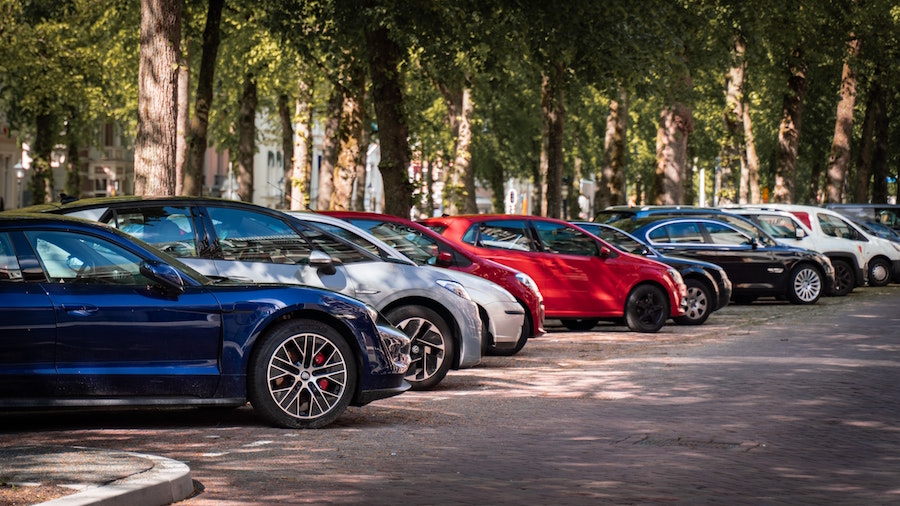
Never mind the concerns about whether or not your automobile is named as one of the most targeted for theft, as these days, parts such as catalytic converters are equally sought after. This is in addition to the traditional concerns about break-ins and vandalism along with the scratches, dents, and fender benders that may occur when your automobile is parked in a public place. Whether street-side or in a lot at the mall your stationary vehicle is at risk. Below are some practical tips to mitigating the threats so that when you return to hit the road there are no unfortunate surprises.
8 Tips to Preventing Damage and Theft to Your Automobile (and parts) When Parking on the Street and in Public Lots
I. Park at a Corner Spot
When you approach street-side parking or a lot, you may be tempted to nestle into a middle space, especially if it’s close to the residence or place of business you’re about to enter into. But even if the row is empty, opt for a corner spot. It’s better to park on a corner so that your vehicle is not bookended between other vehicles which increases the risk of being “tapped” from the front or back (street-side) or side (lot). A corner spot is also more visible, as thieves cannot hide themselves between cars to access the door, window, trunk, or the undercarriage of your vehicle.
II. Park in the Light
Criminals are afraid of the light. Therefore, you must always park in the most well-lit area possible, especially when parking in commercial lots. Look for spaces that are directly under street lamps if you anticipate being parked close to or after dusk. In fact, even in the AM consider the position of natural light as well. If you can see that one area is more shaded than another, park in the latter.
III. Don’t Showcase Valuables
This is one logical tip that drivers and passengers continue to neglect. No matter how much of a rush you are in to exit the vehicle and get to the bank or other errand you need to run – stop, and look around the interior. If there is anything (and we mean anything) that a thief may find appealing, place it in the trunk or bring it with you. Something such as a smartphone or tablet is obvious, but even its charger (which may be plugged into your auto-infotainment system) will fetch a few bucks on the street. Bold criminals won’t hesitate to smash a window to get what they want. And once in, they will rummage about for even more.
IV. Check Your Auto Alarm Settings
Beyond what we’re addressing here today and other auto-theft prevention best practices, be sure to adjust the settings on your auto alarm system, where viable. For instance, modern web-enabled alarm systems account for suspicious movements and activity that are indicative of modern forms of theft, such as those of catalytic converters. There’s a good chance that your new car’s security system can detect vibrations that suggest that a saw is being used to remove the converter. Reference your owner’s manual for instructions.
V. Don’t Park Under Overhead Dangers
Avoid parking under trees. They are full things that can come tumbling down on to your vehicle. Wind can shake loose branches and twigs that when falling from significant distances may scratch your paint and crack a window. Birds, chipmunks, squirrels and other nesting inhabitants can drop hard-shelled nuts on the exterior of your vehicle as well. Even dripped sap can cause a problem when it gets into your vehicle’s grills and vents. However, trees are not the only overhead danger to consider. During the winter be mindful to not park under far-extending awnings or building roofing as ice buildup can fall down and cause significant damage. Simply put, when parking – look up. If there is any possibility of something falling from above, find another place to park.
VI. Don’t Park Near Pools
If it’s raining, avoid parking at the bottom of a gradient where there is a place for runoff to head towards and pool around your vehicle. Even when parking on a relatively flat road, ensure that there are no dips in the pavement where water can pool as well. Flooding around your vehicle can lead to water ingress which may compromise electronic systems.
VII. Don’t Stick Out Like a Sore Thumb
When parking street-side, park as close to the curb as possible so that your vehicle’s doors, wheels, and side mirrors don’t stick out more than the other vehicles that are lined up with you. Fold in your side mirrors for good measure. If in a lot, park deep towards the wall or curb in order to protect the front or back fender/bumper. When you exit the vehicle have a look to see if your vehicle sticks out in relation to the other parked cars. If so, yours will be the first to get dinged.
VIII. Follow the Signs
Road and lot signage may be about more than permitted hours for parking. Note additional information. For instance, municipalities for cities and towns that experience a lot of vehicle break-ins and theft have been known to post signage about the risk. Signage may also warn criminals about bait car programs in place. If you see any posted indicators, you know you are in a high-risk zone. If you have the time and option, look for another place to park that allows you to abide by the guidelines we have established above.
Contact Park Insurance today to receive a review of your auto insurance policy to ensure that you have the best protection possible against damage and theft.
Another Article You May be Interested In: